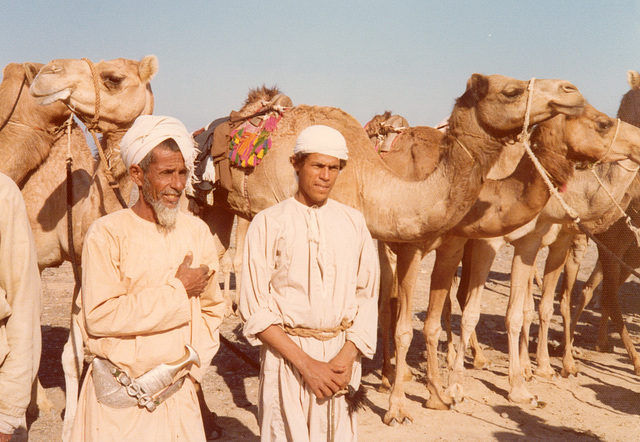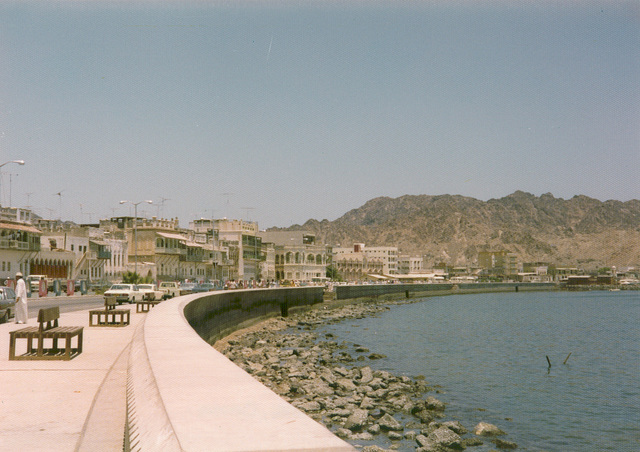
Oman
This is where we lived from January 1972 to January 1978 : ) My youngest daughter was born there.
19 Jan 2007
Camel races 1
These six photos are scans of old prints taken in Oman in late 1977, hence the poor quality. My oldest daughter's school class went on a trip into the desert to watch the Camel Races and I went with them.
19 Jan 2007
Camel races 2
Scan from an old print, taken in Oman in 1977. I've been wanting to scan some of my Oman photos and these happen to be some of the first ones I scanned.
19 Jan 2007
Camel races 4
Scan from an old print, taken in Oman in 1977. The silver "khanjar" (dagger) worn here is part of a man's traditional dress.
These khanjars (curved daggers) have beautifully ornate silver sheaths. The national emblem of Oman consists of a khanjar dagger in a sheath that is superimposed upon two crossed swords. This is also seen on the Omani flag.
"The curved dagger, the khanjar is a distinguishing feature of the Omani personality as well as an important symbol of male elegance. It is traditionally worn at the waist. The shape of the khanjar is always the same and is characterised by the curve of the blade and by the near right- angle bend of the sheath. Sheaths may vary from simple covers to ornate silver or gold-decorated pieces of great beauty and delicacy. In the past the silver khanjars were made by melting down Marie Theresa silver coins.
Different types of khanjars are named after the regions in which they are made and vary according to size, shape, type of metal and the overlay. The top of the handle of the most usual khanjar is flat but the "Saidi" type, which takes its name from the Ruling Family, has an ornate cross-shaped top.
However, all possess certain common features and have the same components:
• The hilt may be made of costly rhinocerous horn or substitutes such as sandalwood and marble.
• The blade determines the value of the khanjar according to its strength and quality.
• The sadr, or upper part of the sheath, is decorated with silver engraving.
• The sheath , the most striking part of the khanjar, is worked with silver threads.
Khanjars are supported on belts of locallymade webbing, sometimes interwoven with silver thread or belts of leather covered by finely woven silver wire with handsome silver buckles, and a knife with an ornate handle of silver thread is often stuck into a simple leather pouch behind the sheath.
Khanjars are worn on formal occasions and at feasts and holidays, and almost all Omani men boast one.
Once worn in self-defence, the khanjar is today both a fashion accessory and a prestige item much in demand."
All this information is from www.omanet.om , the Ministry of Information's excellent website.
19 Jan 2007
Camel races 5
Scan from an old print, taken in Oman in 1977. I hope that life has been good to all the gentlemen in my camel racing photos!
24 Jan 2007
Withstanding time
The old ruins by the Earth Satellite Station, Wadi Aday, Oman, Middle East. Taken on 18 March 1977, on one of our trips into the Interior.
24 Jan 2007
Wadi Aday
The old ruins by the Earth Satellite Station, Wadi Aday, Oman, Middle East. Taken on 18 March 1977, on one of our drives into the Interior.
Jump to top
RSS feed- Latest items - Subscribe to the latest items added to this album
- ipernity © 2007-2024
- Help & Contact
|
Club news
|
About ipernity
|
History |
ipernity Club & Prices |
Guide of good conduct
Donate | Group guidelines | Privacy policy | Terms of use | Statutes | In memoria -
Facebook
Twitter










